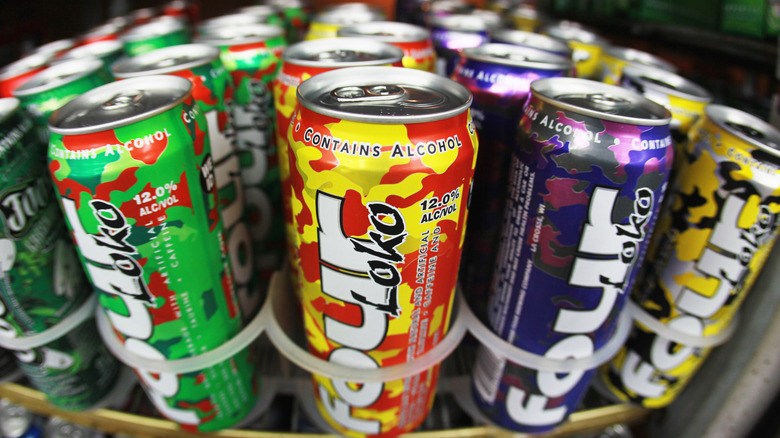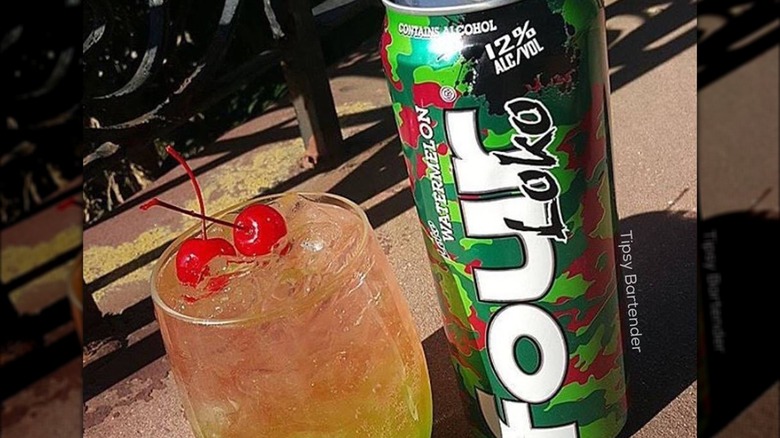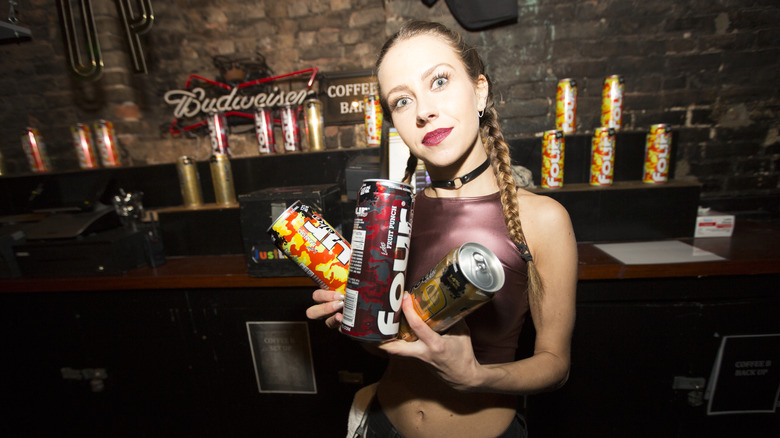Despite Rumors, Four Loko Is Still Around. Here Is Why It's No Longer As Popular
While in aggregate, classic beer is the closest thing to being the bad boy brew on the market, no beer brand is as intentionally provocative as Four Loko (see its irreverent Instagram page as proof). Parent company, Phusion Projects first introduced Four Loko to the world in 2005 as an "energy beer," leading to many wild nights its drinkers may never forget or, more likely, never remember — for years, it was commonly referred to as "blackout in a can."
In its original form, the main components of Four Loko were water, alcohol, sugar, and caffeine. This cocktail of stimulants and depressants, in 2010 earned it a warning from the FDA as a way to spread public health concern and awareness of the drink, as calls for banning the popular campus drink came quickly. As a result, Four Loko pulled its caffeine-infused products from shelves, leading many consumers to believe it had been officially banned. The purchasing public was spooked by the warning, and sales slumped, which led to Phusion Projects reintroducing the drink a month after the warning was issued, taking the stimulants (caffeine, taurine, and guarana) from the formula.
An original formula frought with danger
With its original formula packing excessive amounts of alcohol and caffeine, most felt the public alert was warranted. According to the CDC, the two (colloquially known as uppers and downers) are a combination with potentially dire health effects, and the FDA's warning cited several reports of deaths associated with the drink. In tandem, caffeine can mask the depressing and impairing effects of alcohol, leading consumers to drink excessively in pursuit of the buzz one expects to feel when imbibing.
Many other organizations publicly spoke out against Four Loko in its heyday, including Harvard University, Boston University, and the Federal Trade Commission. In 2010, the FDA warned Phusion directly that it would seize all its products if the company did not remove the caffeine from them. Given that pressure and growing consumer concern, Phusion promptly pulled the existing Four Loko and shelves and replaced them with the depressant-only (and in a market sense, mostly unremarkable) formula.
Where Four Loko stands today
However, even without caffeine, the sheer potency of Four Loko has upheld the brand's reputation in the realm. With its alcohol-by-volume (ABV) contents ranging from 10% to 14% (varying by flavor and state), a can of Four Loko packs a bit more alcohol than most big-brand beers.
The Four Loko drinks at the bottom end of its ABV spectrum still exceed the CDC's maximum recommendation of two drinks in a day for men and one for women. Also, while Four Loko no longer contains caffeine or other stimulants, they are still high in sugar — each can has about 60 grams. The beverage's sweetness may also mask the alcohol content and make the beverage more palatable, leading consumers to drink more in a shorter time span than they might otherwise. Though it should be said, the brand is far from alone on that front these days.
Given the negative publicity and fear that still surround Four Loko, the drink is nowhere near as popular as it was in the early 2000s. While you can still find them, there are many options in the RTD market that don't have to overcome this kind of notoriety.


